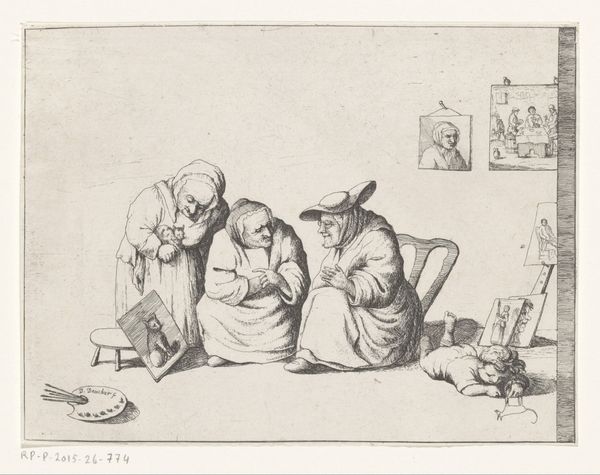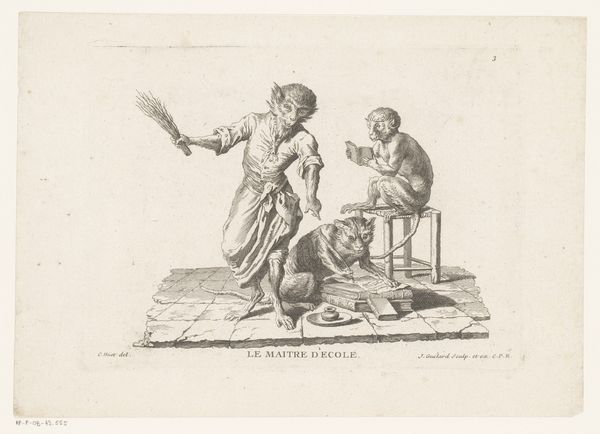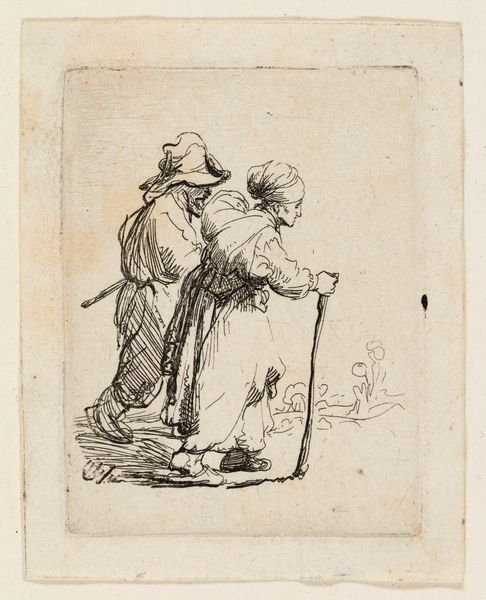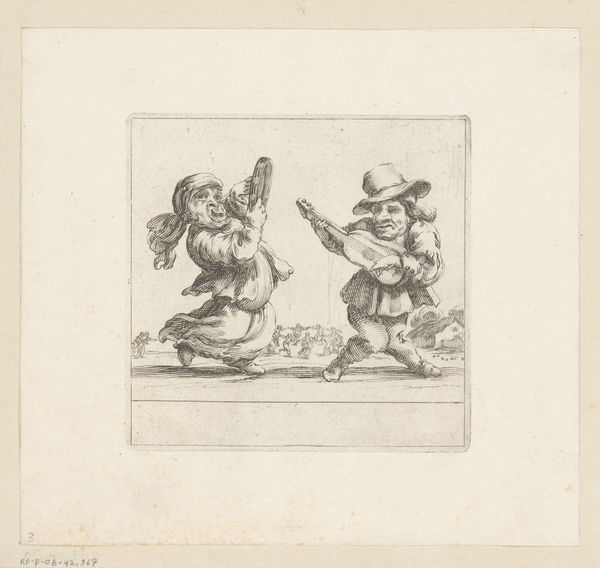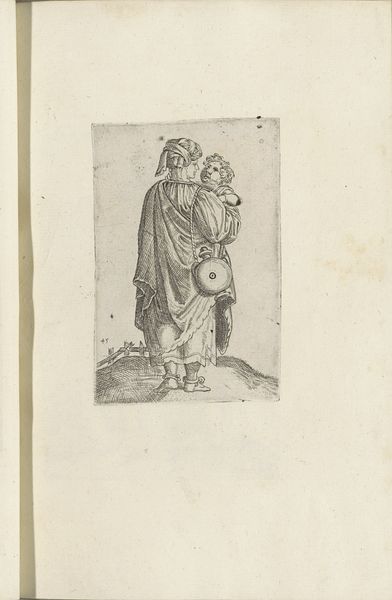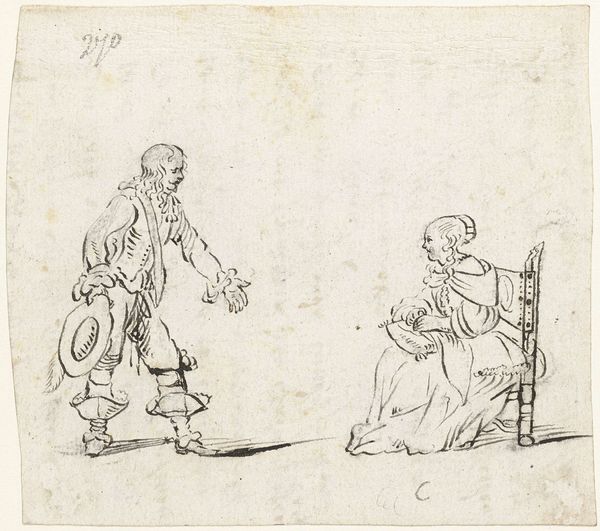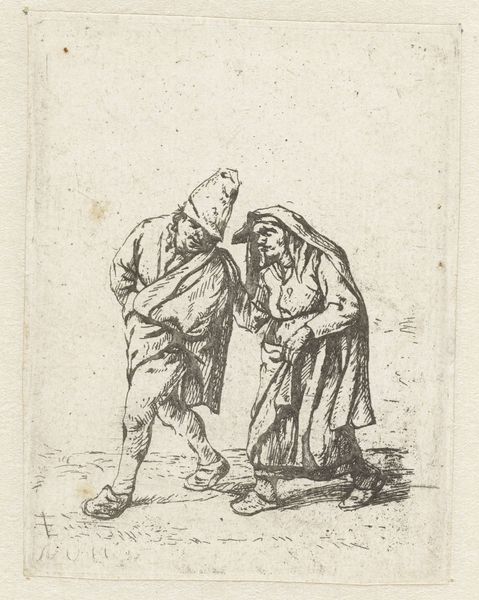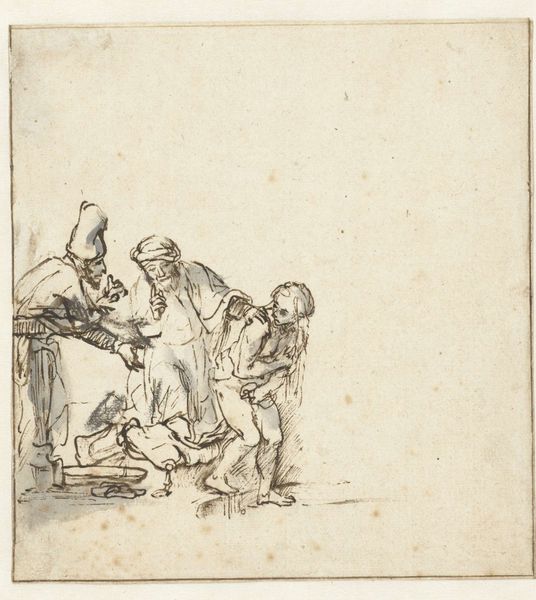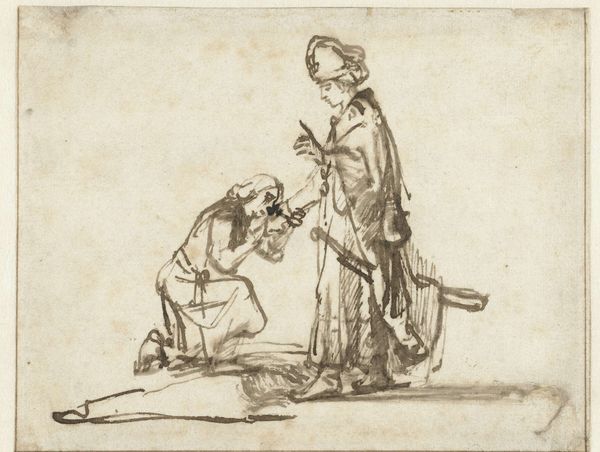
etching, engraving
#
baroque
#
etching
#
caricature
#
old engraving style
#
figuration
#
genre-painting
#
engraving
Dimensions: height 106 mm, width 109 mm
Copyright: Rijks Museum: Open Domain
Editor: Here we have a caricature from between 1620 and 1687, titled "Caricature of a Couple in Love," by François Collignon. It’s an etching, and it has this quite peculiar, almost grotesque feeling. What do you see in this piece? Curator: I see echoes of societal anxieties mirrored in distorted forms. Consider the exaggerated features; they're not merely comedic. They become signifiers of internal states, reflecting perhaps a skewed perception of beauty, a commentary on vanity. It’s Baroque with a sardonic edge. Does the way their hands are positioned remind you of anything? Editor: Vaguely… a marriage proposal? Courtly love? I don’t know why, but I initially assumed they’re on a stage, in a theater. Curator: That’s a good observation, and quite possible. Think about the performative nature of affection, then and now. Collignon has captured, within these grotesque caricatures, a lasting question about authentic emotion versus social performance. In other words, the image becomes an ongoing commentary on what we choose to accept and portray as love, both externally and internally. Editor: So it's about what is underneath. About questioning our expectations of… beauty, of love, or maybe, societal roles? Curator: Precisely. And the fact that it’s an etching – reproducible – means this commentary was intended for wider consumption, further embedding these images, and their associated cultural values, into the collective consciousness. The symbolic weight becomes amplified, generational even. Editor: I hadn’t considered how the medium itself played into that cultural spread! Thank you! I’ll never look at caricatures the same way again. Curator: Indeed. Images carry much more than their surface. They're cultural time capsules, revealing who we were, and perhaps, who we still are.
Comments
No comments
Be the first to comment and join the conversation on the ultimate creative platform.

